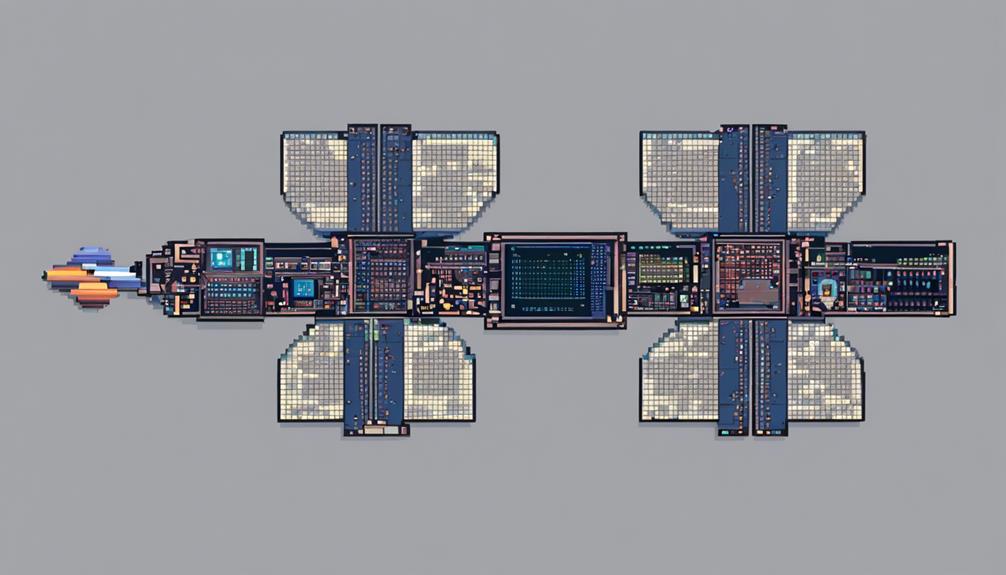Satellite onboard computers and processing systems are the unsung heroes of space missions, silently orchestrating a myriad of critical tasks essential for the functionality and success of satellites. These sophisticated units are responsible for executing commands, managing data, and ensuring the seamless operation of spacecraft in the harsh environment of space. However, the complexities involved in designing and implementing these systems go far beyond what meets the eye, with constant advancements and innovations shaping the future of satellite computing. A closer look at the intricacies of satellite onboard computers reveals a world where precision and reliability are paramount, paving the way for new frontiers in space exploration and technology.
Key Takeaways
- Onboard computers are vital for satellite control and data management.
- Redundancy and memory management ensure mission continuity and reliability.
- Speed, efficiency, and power management are crucial for optimal performance.
- Future trends focus on denser, more efficient systems for advanced missions.
Functions of Satellite Onboard Computers
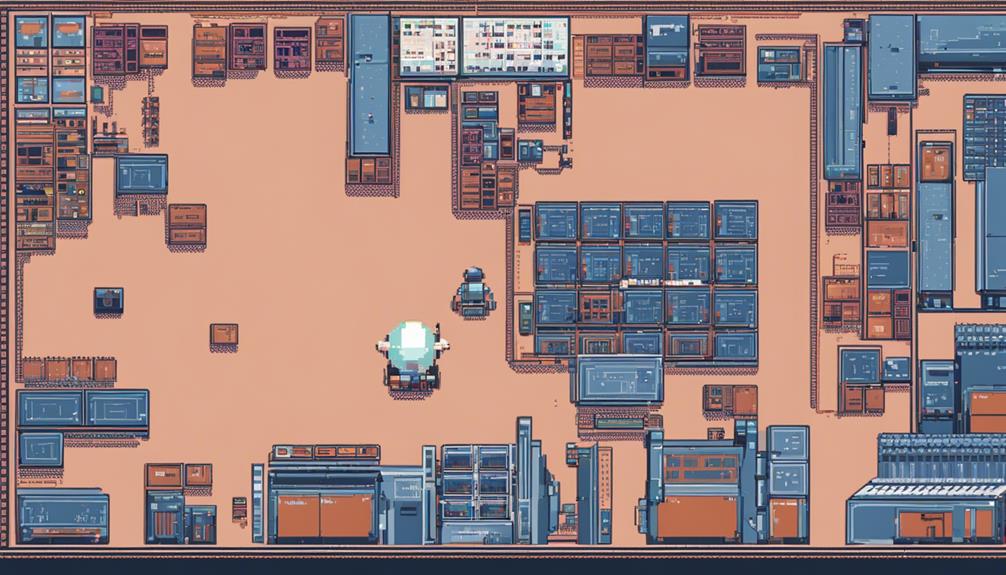
The functions of satellite onboard computers encompass the implementation of control laws and the processing of payload-associated data critical for the efficient operation of satellites. These computers are responsible for data processing, communication handling, monitoring subsystems, telemetry, and overall system control.
In terms of data processing, satellite onboard computers manage the reception, processing, and transmission of data from various sensors and instruments on the satellite. They ensure that the data is accurately processed and stored for further analysis or transmission back to Earth. Moreover, these computers handle communication activities by packetizing data and managing the flow of information to and from the satellite.
Additionally, satellite onboard computers play a crucial role in implementing control laws that govern the behavior of the satellite. They monitor subsystems to ensure that all components are functioning within specified parameters and take corrective actions when necessary. Telemetry data is continuously collected and analyzed by these computers to provide real-time feedback on the health and status of the satellite load.
Significance of Satellite Processing Units
Playing a pivotal role in satellite operations, satellite processing units, such as On-Board Computers (OBCs), are essential for efficient control law implementation and payload data processing. OBCs serve as the central processing hub, managing critical functions that ensure the satellite's proper functioning. These units are responsible for overseeing data processing, communication activities, control systems, task scheduling, and resource utilization. Efficient task scheduling by OBCs optimizes resource allocation, ensuring timely execution of essential functions while preventing conflicts in task execution. Moreover, OBCs play a crucial role in handling communication data packeting activities and monitoring the health status of satellite loads. Acting as the brain of the satellite, OBCs facilitate communication activities and ensure the smooth operation of control systems. By managing data storage activities, processing sensor data, and responding to data through actuators, OBCs enable the satellite to perform its designated tasks effectively. The table below provides a visual representation of the significant roles performed by satellite processing units:
| Key Functions | Importance |
|---|---|
| Data Processing | Efficient payload handling |
| Communication Activities | Ensuring data transmission |
| Control Systems | Facilitating task execution |
| Task Scheduling | Optimizing resource usage |
Communication Capabilities of Onboard Computers
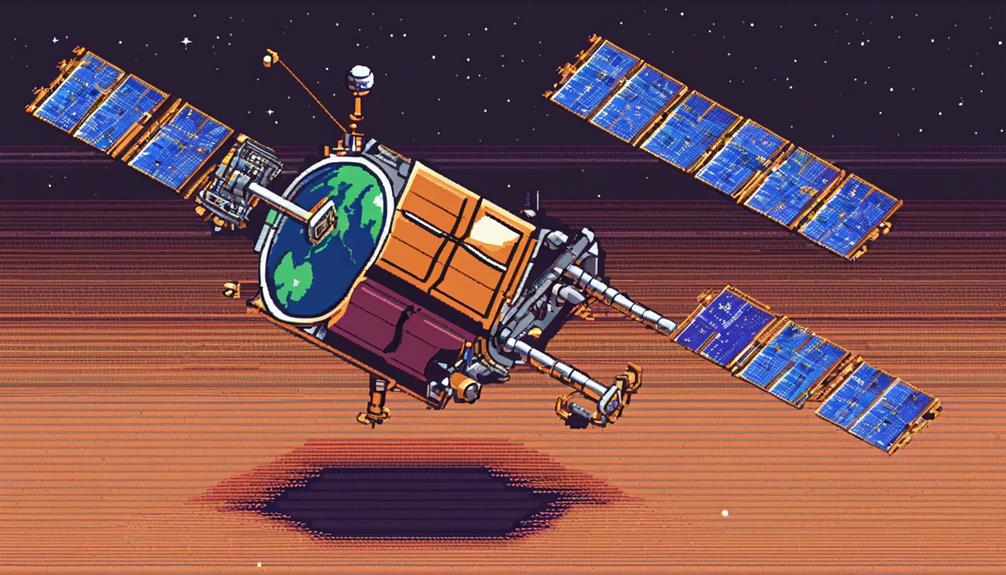
Facilitating seamless data exchange between satellite components, onboard computers showcase robust communication capabilities through efficient data packeting and transmission to ground stations. These computers manage communication protocols and interfaces with other avionics subsystems, ensuring smooth and reliable data exchange processes. By handling the intricate task of data packeting, onboard computers enable the transmission of vital information to ground stations in a structured and efficient manner.
Moreover, onboard computers play a crucial role in optimizing resource utilization through efficient task scheduling. By prioritizing communication functions and data transmission activities, these computers ensure timely execution of critical tasks while maximizing the utilization of available resources. This optimization is essential for maintaining continuous and uninterrupted communication links between the satellite and ground stations.
Additionally, onboard computers are responsible for monitoring the health status of the satellite load and managing data storage activities. This monitoring function enables real-time adjustments based on sensor inputs, ensuring that the satellite operates at peak efficiency. Overall, the communication capabilities of onboard computers are fundamental to the seamless operation of satellite systems, enabling efficient data exchange, effective task scheduling, and optimal resource utilization in the realm of satellite communications.
Data Processing on Satellites
Satellite data processing encompasses the execution of control laws, processing of payload data, handling of communication packeting, monitoring of satellite health, and management of data storage activities. In the realm of data processing on satellites, the following key points elucidate the critical functions and processes involved:
- Control Systems: Data processing on satellites involves the implementation of sophisticated control systems that govern the satellite's behavior, ensuring optimal performance and functionality.
- Task Scheduling: Efficient task scheduling by onboard computers is crucial for managing processor activities, optimizing resource allocation, and ensuring the timely execution of mission-critical functions.
- Real-time Adjustments: Onboard computers play a pivotal role in making real-time adjustments based on sensor inputs, enabling swift responses to changing environmental conditions and ensuring seamless data flow between various satellite components.
These aspects highlight the intricate interplay between data processing, control systems, task scheduling, real-time adjustments, and mission-critical operations on satellites. By meticulously managing these processes, satellite operators can enhance the overall performance and reliability of satellite missions.
Navigation Systems on Satellites

Navigation systems on satellites leverage sophisticated onboard computers to process data from various global navigation satellite systems, enabling precise positioning and control through integration of sensor data and precise timing signals. These systems play a critical role in satellite positioning, velocity determination, attitude control, and trajectory adjustments. By utilizing signals from GPS, GLONASS, Galileo, or BeiDou constellations, onboard computers help calculate orbital parameters and ensure accurate positioning of the satellite in orbit. The integration of sensor data allows for real-time adjustments, optimizing the satellite's path and orientation.
| Navigation Systems Components | Functionality | Importance |
|---|---|---|
| Global Navigation Satellite Systems (GNSS) Data | Provides positioning data | Essential for accurate satellite navigation |
| Sensor Data Integration | Determines satellite position, velocity, and attitude | Enables precise control and adjustments |
| Precise Timing Signals | Synchronization using atomic clocks | Critical for accurate trajectory calculations |
Moreover, navigation systems on satellites rely on precise timing signals from atomic clocks to synchronize operations effectively. These signals are processed by the onboard computers to ensure accurate timekeeping for all navigation calculations. Additionally, onboard computers execute navigation algorithms that facilitate precise pointing of antennas towards Earth for communication purposes, enhancing the satellite's ability to establish and maintain communication links. This intricate interplay between navigation systems and onboard computers is fundamental for the successful operation of satellites in orbit.
Onboard Computer Redundancy
Ensuring the reliability of satellite onboard computers involves implementing redundancy for critical components to safeguard against system failures. Redundancy in onboard computers is vital for maintaining system reliability and operational continuity in the demanding conditions of space. Here are three key aspects of redundancy in satellite onboard computers:
- Redundant Configurations: Dual or triple redundancy setups are commonly employed in satellite onboard computers. This means critical components like processors, memory modules, and power supplies are duplicated to ensure backup options in case of a component failure. Redundant configurations help minimize the risk of system failures and enhance the overall reliability of the satellite's onboard computer system.
- Critical Subsystems: Redundancy strategies are particularly crucial for critical subsystems within the satellite's onboard computer. Components in subsystems responsible for power management, data processing, and memory storage are often duplicated to prevent single points of failure. By implementing redundancy in these critical subsystems, satellite operators can mitigate risks and improve the resilience of the onboard computer system.
- Mission Success: Redundancy in onboard computers plays a significant role in ensuring mission success. By incorporating redundant components in critical areas, satellite systems can continue to function even if individual parts experience malfunctions. This redundancy is essential for maintaining satellite functionality and accomplishing mission objectives despite the challenges posed by the space environment.
Onboard Computer Memory Management
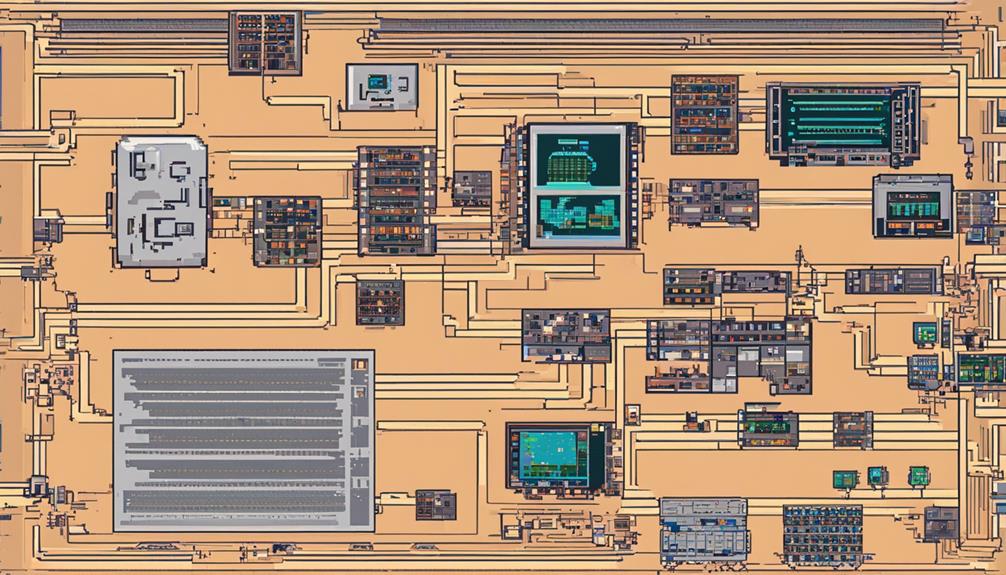
Onboard computer memory management is a critical aspect of satellite systems, encompassing memory allocation strategies, data storage techniques, and resource optimization methods. Efficient utilization of non-volatile memories like Flash and volatile memories such as RAM is paramount for ensuring smooth satellite operations. Memory management in onboard computers plays a pivotal role in maintaining reliable data storage for essential functions like attitude control and telemetry.
Memory Allocation Strategies
Efficient memory allocation strategies play a critical role in optimizing the performance and stability of onboard computer systems by carefully partitioning memory segments for various data storage and processing purposes. When considering memory allocation strategies, it is important to take into account the processing capabilities and data requirements of the system. Dynamic memory allocation techniques, such as heap memory management, enable flexible memory allocation and deallocation during runtime, enhancing the system's adaptability. However, the issue of memory fragmentation must be carefully managed to prevent performance degradation and system instability. By selecting the most suitable memory allocation strategy, satellite onboard computers can effectively utilize system resources, ensuring efficient operation and reliable performance in space missions.
- Understanding data requirements and processing capabilities is crucial for selecting an appropriate memory allocation strategy.
- Dynamic memory allocation techniques like heap memory management provide flexibility in memory allocation.
- Effective management of memory fragmentation is essential to maintain system performance and stability.
Data Storage Techniques
To optimize data storage efficiency on satellite onboard computers, various memory management techniques are employed, utilizing non-volatile memories like flash memory or EEPROM for long-term storage and volatile memories such as RAM for temporary data processing. Flash memory and EEPROM are used for their ability to retain data without power, making them ideal for storing critical information. RAM, on the other hand, provides fast read and write capabilities but loses data when power is removed. Techniques like wear leveling are implemented to distribute write and erase cycles evenly across flash memory to extend its lifespan. Additionally, error correction codes (ECC) are utilized to detect and correct memory errors, ensuring data integrity and reliability.
| Memory Type | Usage |
|---|---|
| Flash Memory | Long-term storage |
| EEPROM | Long-term storage |
| RAM | Temporary data processing |
| Wear Leveling | Extends flash memory lifespan |
| ECC | Ensures data integrity |
Resource Optimization Methods
Resource optimization methods in satellite onboard computer memory management play a crucial role in enhancing operational efficiency and maximizing processing capabilities for critical functions. Effective resource allocation strategies ensure that memory is utilized optimally, avoiding wastage and enhancing overall performance. Techniques like dynamic memory allocation dynamically adjust memory usage based on real-time needs, improving data processing efficiency. Memory fragmentation mitigation strategies maintain memory integrity by preventing fragmentation issues that can degrade performance over time. Real-time monitoring of memory usage allows for immediate adjustments in resource allocation, ensuring smooth operation even under varying workloads. By implementing these methods, satellite systems can achieve peak performance levels while minimizing resource overhead.
Onboard Computer Speed and Efficiency

With the demand for real-time data processing in satellites, the speed and efficiency of onboard computers play a critical role in executing commands, controlling functions, and managing telemetry data. Onboard computers in satellites require high processing speed to handle a multitude of tasks promptly. This speed is crucial for ensuring that commands are executed without delay, satellite functions are controlled accurately, and telemetry data is managed effectively. Efficient onboard computers enable quick decision-making processes, precise control over satellite operations, and seamless communication with ground stations, all of which are vital for mission success.
Advancements in processor technology and memory capabilities contribute significantly to enhancing the speed and efficiency of satellite onboard computers. These technological improvements allow onboard computers to process data faster, execute commands more efficiently, and manage telemetry data in real-time. The ability to manage multiple tasks simultaneously is essential for satellites, and the speed and efficiency of onboard computers are fundamental in ensuring seamless operation and successful mission outcomes. In essence, the performance of onboard computers directly impacts the overall effectiveness and reliability of satellite systems in orbit.
Onboard Computer Power Management
Given the critical importance of efficient power management in onboard computers for satellites, the focus shifts to optimizing power consumption to ensure operational efficiency and longevity of missions. Onboard computers play a pivotal role in managing power resources effectively, especially considering the limited power generated by solar cells in satellites. FPGAs (Field-Programmable Gate Arrays) are key components in this process, aiding in the reduction of power consumption during operations and contributing to overall efficiency. Different types of FPGAs have varying impacts on inrush current and power efficiency within onboard computer systems, highlighting the need for careful selection based on mission requirements.
Key Points for Onboard Computer Power Management:
- Power Efficiency: Onboard computers are designed to minimize power consumption without compromising performance, ensuring that satellite missions can operate optimally within the energy constraints.
- FPGA Integration: The integration of FPGAs within onboard computer systems enables dynamic power management, allowing for real-time adjustments to meet power demands efficiently.
- Inrush Current Considerations: Understanding how different FPGAs affect inrush current is crucial for maintaining the stability and reliability of onboard computer systems, contributing to the success of satellite missions.
Onboard Computer Interface Standards
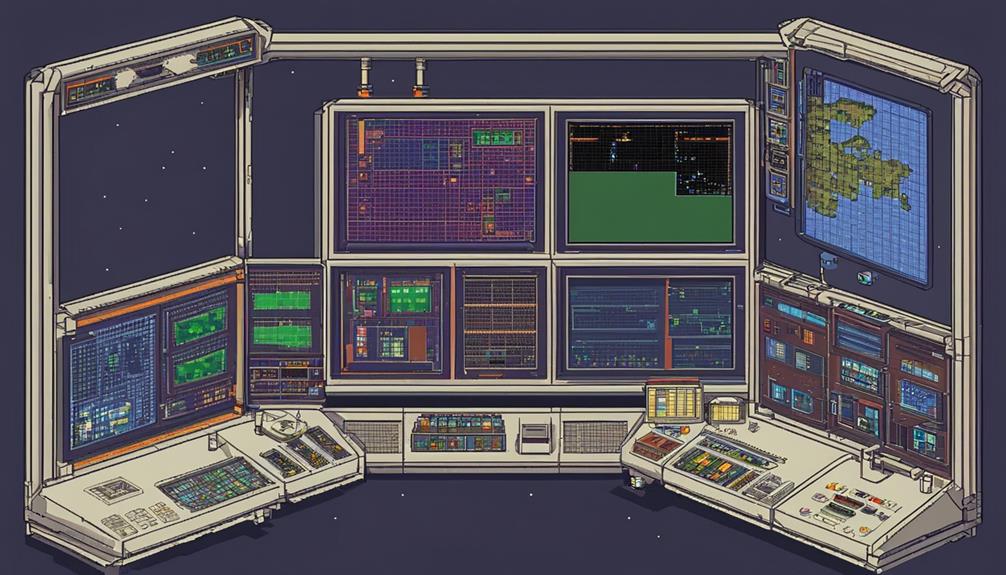
Interface standards are integral to the seamless communication and integration of onboard computer systems within satellites, utilizing formats such as RS485, CAN, and SpaceWire. These standards facilitate efficient data exchange between onboard computer subsystems and other satellite components, ensuring the smooth operation of various communication services and telemetry functions within the space environment.
RS485, a popular interface standard, is often employed for long-distance communication due to its robustness and noise immunity characteristics. CAN, another widely used standard, is preferred for high-speed networking applications, enabling rapid and reliable data transmission between different onboard systems. SpaceWire, on the other hand, is specifically designed for high-data-rate applications, making it suitable for handling large volumes of data in space missions.
Adherence to interface standards is crucial for establishing compatibility and interoperability among different On-Board Computers (OBCs) and satellite subsystems. By following these standards, satellite operators can ensure reliable and robust operations, minimizing the risk of communication errors and system failures during critical mission phases.
Onboard Computer Testing and Validation
The rigorous testing and validation of onboard computer systems are essential components in ensuring their reliable functionality in the demanding conditions of space environments. When it comes to onboard computer testing and validation, the following processes are crucial:
- Thermal Vacuum Testing: This test subjects the onboard computer to extreme temperature variations, mimicking the conditions of space where temperatures can range from extremely hot to extremely cold. By testing the computer's response to such conditions, engineers can ensure its reliability in space environments.
- Radiation Testing: Radiation exposure is a significant concern in space. Radiation testing evaluates how well the onboard computer can withstand and function properly in the presence of high levels of radiation. This testing is vital to guarantee the computer's performance over its operational lifespan in space.
- Vibration Testing: Spacecraft experience vibrations during launch and while in operation. Vibration testing assesses the onboard computer's resilience to these vibrations, ensuring that it can maintain its functionality and structural integrity under such conditions. This testing helps verify the durability of the computer system, ultimately contributing to its reliability in space environments.
Testing and validation processes play a critical role in certifying the onboard computers for space missions, safeguarding their performance and longevity in the challenging space environment.
Onboard Computer Upgrades and Maintenance
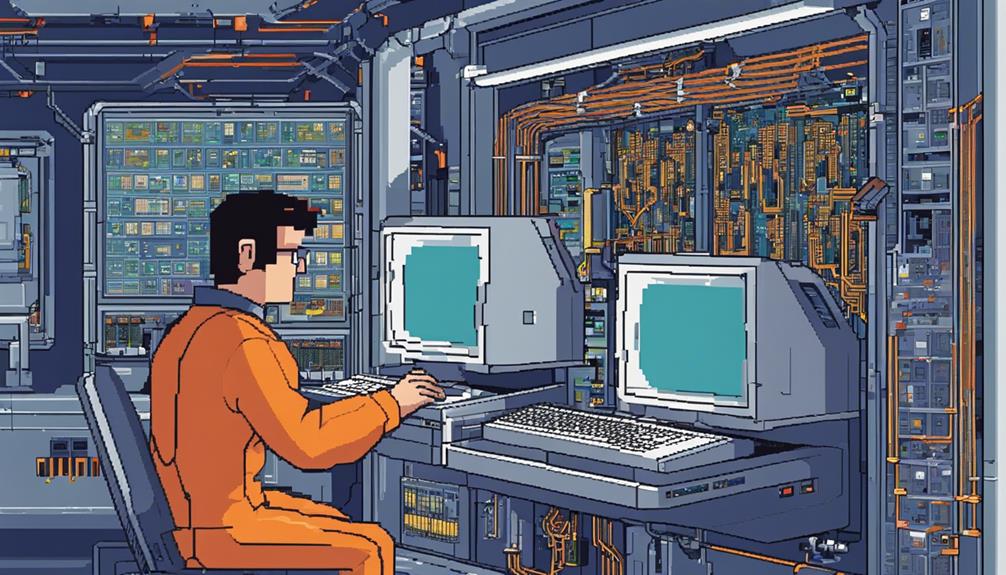
Initiating the discussion on onboard computer upgrades and maintenance, it is imperative to understand the significance of upgrade procedures for enhancing satellite performance. Planning maintenance schedules ensures timely software updates, hardware replacements, and system checks to maintain optimal functionality. Moreover, utilizing performance monitoring tools aids in tracking system health and addressing potential issues proactively.
Upgrade Procedures Overview
When conducting upgrade procedures for satellite onboard computers, it is imperative to carefully assess and plan the replacement or enhancement of hardware components to ensure optimal performance and compatibility with evolving mission requirements. Upgrades are essential for improving processing capabilities, enhancing reliability, and adapting to new technologies. Prioritizing upgrade procedures can lead to reduced downtime, increased efficiency, and seamless integration of advanced functionalities. By upgrading processors, memories, or interfaces, satellite onboard computers can meet the demands of modern space missions effectively. Maintenance tasks such as software updates, system diagnostics, and performance checks are crucial for ensuring the continued functionality and longevity of satellite onboard computers. Regular upgrades and maintenance contribute significantly to extending the lifespan and efficiency of these critical systems.
Maintenance Schedule Planning
To ensure optimal performance and longevity of satellite onboard computers, meticulous planning of maintenance schedules for upgrades and maintenance is imperative. Regular maintenance tasks include hardware inspections to identify any potential issues proactively. Additionally, software updates are essential to keep the onboard computer systems secure and running efficiently. When planning upgrades, considerations such as replacing outdated components, enhancing processing capabilities, or improving reliability should be taken into account. It is crucial to schedule maintenance during satellite operational downtime to minimize disruptions to mission activities. Following manufacturer recommendations and adhering to industry best practices are vital for effective onboard computer maintenance, ensuring the satellite functions at its peak performance levels.
Performance Monitoring Tools
Implementing performance monitoring tools is essential for optimizing onboard computer upgrades and maintenance on satellites. These tools help track system health, efficiency, and potential issues in real-time. Upgrades to computer software and hardware enhance processing capabilities, improving overall system performance. Maintenance involves regular checks, updates, and diagnostics to ensure reliable operation. By utilizing monitoring tools, data on power consumption, memory usage, and processing speed can be analyzed for better decision-making. Advanced diagnostics enable proactive maintenance and troubleshooting, reducing the risk of failures. Overall, integrating performance monitoring tools into the maintenance and upgrade processes of onboard computers is crucial for maximizing the efficiency and longevity of satellite systems.
Satellite Onboard Processing Advancements
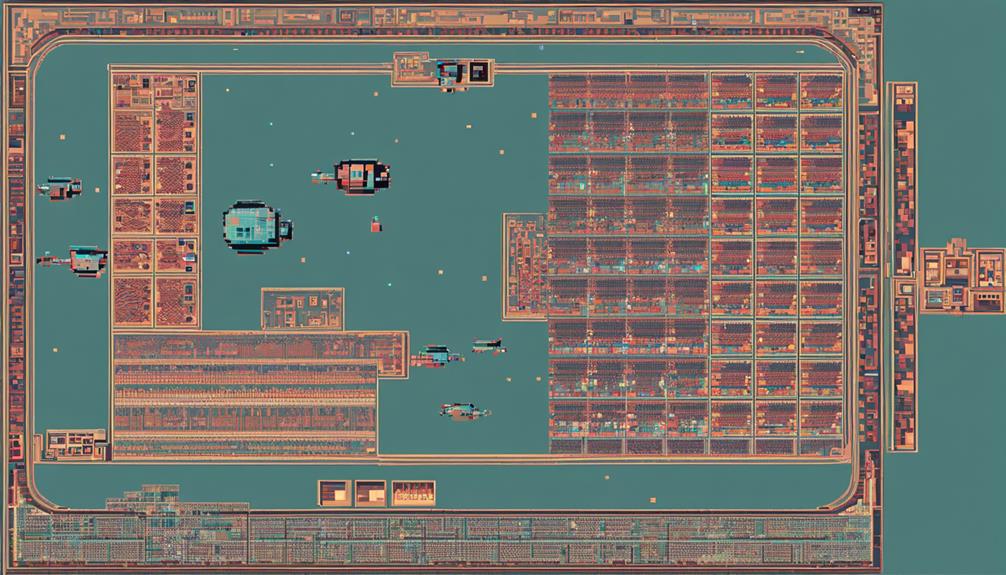
Advancements in satellite onboard processing are revolutionizing space technology through the integration of cutting-edge System-on-Chip (SoC) technology for enhanced efficiency and compactness. The latest onboard computer architectures are harnessing denser and lower power integrated circuits to achieve higher performance levels. This evolution is propelling satellite onboard systems towards more sophisticated and densely packed designs in the upcoming generation.
Incorporating advanced processors like Cortex-M3, ARM Cortex M4/M7, and Q8 processors, satellite onboard computers are experiencing a significant boost in processing capabilities. Additionally, memory components such as LPDDR4 RAM, QSPI Flash, and eMMC are being integrated into onboard computers to enhance data storage and retrieval operations.
To provide a clearer picture of the advancements in satellite onboard processing, the following table outlines the key components and technologies driving these enhancements:
| Category | Technologies |
|---|---|
| Processing Units | Cortex-M3, ARM Cortex M4/M7, Q8 |
| Memory Components | LPDDR4 RAM, QSPI Flash, eMMC |
| Architecture | System-on-Chip (SoC) |
| Efficiency | Denser and lower power ICs |
| Performance | Enhanced processing capabilities |
These innovations in satellite onboard processing are paving the way for more efficient, powerful, and compact satellite systems, shaping the future of space technology.
Future Trends in Satellite Computing
Incorporating cutting-edge System-on-Chip (SoC) technology, future trends in satellite computing are poised to revolutionize onboard systems with enhanced integration and efficiency. This advancement is set to bring about significant changes in satellite onboard computing, with a focus on more compact and efficient systems tailored to meet the demands of advanced satellite missions. The following points highlight the key aspects of these future trends:
- Denser Systems: Future satellite onboard computers are expected to feature denser integrated circuits, allowing for more processing power within a smaller physical footprint. This densification enables the accommodation of complex functionalities in a limited space, crucial for modern satellite missions.
- Lower Power Consumption: The evolution in architecture, driven by SoC technology, aims to reduce power consumption in satellite onboard systems. Lower power requirements not only contribute to improved energy efficiency but also have a positive impact on the overall reliability and longevity of the systems.
- Enhanced Performance: With the integration of advanced SoC technology, next-generation onboard computers are anticipated to deliver superior performance capabilities. This enhancement in processing power and efficiency is essential for handling the ever-increasing complexities of modern satellite missions, ensuring optimal operation and data processing onboard.
Frequently Asked Questions
What Is an Onboard Computer Satellite?
An onboard computer satellite is a critical component in space technology, enabling advancements in satellite operations. It serves as the central processing unit, managing data processing, artificial intelligence integration, and satellite communication protocols. These onboard computer systems are pivotal for executing tasks, optimizing resource usage, and ensuring timely function execution. Their role extends beyond mere data processing, acting as the brain of the satellite and facilitating seamless communication and control functions in space operations.
How Are Computers Used in Satellites?
Computers in satellites play a crucial role in handling data processing, managing communication systems, optimizing power management, integrating sensors, and executing complex imaging algorithms. They ensure efficient operation, data collection, and transmission to ground stations, contributing to mission success. By processing vast amounts of data, these onboard computers enable real-time decision-making, support various scientific and operational objectives, and enhance the functionality and performance of satellites in orbit.
What Is OBC in Computer?
The term OBC, or Onboard Computer, refers to a pivotal component within a system that processes data and executes instructions. It forms the core of computer architecture, handling tasks like data processing, software development, hardware integration, and signal processing. OBCs are intricate systems composed of various elements, including microprocessors, memories, and companion chips. These components work together to ensure efficient and effective operation of the computer system.
What Is the on Board Computer?
The onboard computer (OBC) is a crucial component in various systems, responsible for data processing, communication systems management, power distribution, sensor integration, and running navigation algorithms. It acts as the brain of the system, coordinating and executing tasks efficiently. Its design and capabilities significantly impact the overall performance and functionality of the system it operates in, making it a critical element in modern technology.
